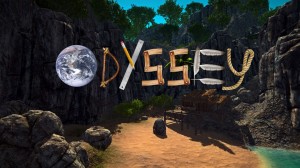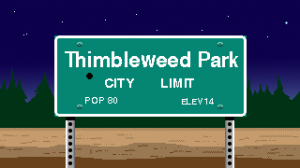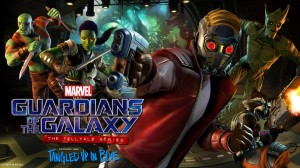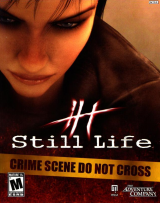Review for Odyssey page 2
You are minding your own business, cruising through the Caribbean, when you hear a scratchy distress call over the radio. A young girl is begging you to come to the rescue of her family, part of a scientific expedition now trapped by treasure-seeking sailors on the Wretched Islands. And so begins your Odyssey, which will see you searching throughout these rocky volcanic isles, finding hints as to what has happened, and reading extensive material about astronomy and physics. The informational aspect dominates the story and exploration, which means that gamers who like to study physical phenomena will enjoy this game much more than will those pure dilettantes hoping to learn a bit of fun science while playing what turns out to an unfinished video game.
Odyssey, developed by The Young Socratics and funded by a Kickstarter campaign with the tagline “The Next Generation Science Game,” is unabashedly educational. I played many edutainment titles back in the 1990s and early 2000s when first-person Myst-style games like Astronomica and Physicus were popular. I haven’t seen any more in this particular style for at least a decade, however, so it was with great expectation of a game that might lead to a resurgence in environmental discovery, science-based puzzles, intriguing plotlines and educational content that I dipped into Odyssey.
The young woman you’re trying to rescue is Kai Rao, who came to the Wretcheds with her archaeologist father, her civil engineer mother, her brother Sid, and their guide. Kai is a scientist in the making, sporting a ravaging curiosity and a love of building experimental models with “found” junk. According to her own chronicle, as her father set up his dig, Kai gazed at the Caribbean skies and asked about the history of astronomy. She was thrilled by Mars’ retrograde motion, got too excited to go to sleep after realizing that Jupiter has moons, and fell down in the dumps at the discovery that Copernicus’ model requires epicycles. Yes, Kai is not your average 13-year-old.
All of the game’s story, character development, science, and puzzle clues appear in Kai’s diary, which is more than 250 pages long. You discover these entries a few at a time. Most of the pages contain a mere paragraph or two, along with a cartoon-like illustration or photograph. Still, this is a LOT of reading (the diary entries are not voiced). Plot details intrigue at first, but as you progress the vast majority of information turns to straight history and science, albeit written from the perspective of a young teen. The writing is clear enough for a layperson to understand, but won’t win any prizes for dazzling descriptive engagement. Cramming encyclopedic facts into a personal diary doesn’t work well here – in my opinion, edutainment games that provide separate in-game links to reference material do a better job of teaching it. Data necessary to solve each conundrum is highlighted in yellow in Kai’s diary, so you could technically play the entire game just for this and skim right over the story and physics. But if you did, you’d quash one of the main reasons for playing Odyssey.
Controlled from the first-person perspective, you use the keyboard for movement and pan with the mouse. Odyssey does not contain a hotspot highlighter, though it’s usually fairly apparent when you can interact with something. (A major exception occurs late in the game, which led to intense frustration and, finally, reference to a walkthrough.) The game also includes a small inventory, whose item uses are also generally obvious. Your progress is recorded via autosave only, often immediately after you pick up new diary pages.
The environments encompass sunlit rocky islands (including one that’s intricate, almost maze-like), wooden huts, towers, a dark grotto, and an underground area where lava bubbles. An aura of mystery prevails throughout, especially while exploring the remnants of a WWII base left abandoned here for decades. Immersion as you explore is aided by the realistic use of light and shadow, with random mist drifting by. Though the scenery is lovely, the graphics aren’t quite as sharp as other 3D locales I’ve experienced recently: the rock surfaces up-close are sometimes pixelated, while the leaves on bushes are unrealistically thin, moving stiffly in the breeze. Sometimes as I explored, trees in the distance would suddenly pop up on the horizon. You’ll hear the buzz of generators spewing fumes, you can watch and listen to waves lapping against the rocks, and hear the chittering of bugs. The background score includes deep, mournful strings and chant-like vocals that suit the atmosphere but become repetitive if you linger. One of my favorite moments occurred while zooming down a zipline, a whiz-bang ride celebrated by joyful orchestral music.
As you wander about, you will find all of Kai’s experiments, which were set up with the help of her family to aide in her discovery of astronomical phenomena. These have all been turned into defensive mechanisms against the invading sailors, so that each must be solved, adjusted to the right pattern, or tuned to a specific point described in Kai’s diary so that a door will open or a key item will be uncovered. (Kai explains in her distress call that the pirates don’t seem intelligent enough to solve all her science projects, though she hopes her rescuer will be able to.) For the second half of the game, you gain access to a new island, and this one is so full of pathways that (until you figure out how everything is linked) it can be confusing. I mapped it all first, then as I started solving the puzzles, realized that actually I hadn’t needed to do all that mapping. Still, I was glad to have my bearings so thoroughly established before taking on the conundrums.
The challenges in Odyssey, which range in difficulty from easy to quite tough, include understanding and arranging astronomical symbols, experimenting with pendulum devices, interpreting graphs showing how objects fall, moving planetary models into the correct alignment, and using clues to locate a hidden entryway. You’ll do some simple math and will probably need to take a few notes to hash out the most difficult concepts.
At first, I would read the information in the diary and then address Kai’s experimental model based on that section, but this made the models feel just like a school examination. I found I enjoyed Odyssey more if I toyed around with the models first to learn whatever I could, and later studied the diary to figure out how the models needed to be oriented. My favorites were the Buddha Board, a machine that draws elliptical and circular orbits, which was quite fun (though also tricky) to mess around with, and the dark grotto setup where I figured out the distances to variously positioned stars. Still, I never lost the sensation of the game as a teaching and testing scenario.
It’s a noble attempt to make difficult concepts fun to learn, but only partially successful. As I played I kept asking myself: is it more fun to figure out the differences between the heliocentric vs. geocentric models of the solar system while exploring a sun-drenched island, worrying about being attacked, and playing with experimental models rather than reading a textbook? Okay, yes it is. Did I understand the concepts better because they are described by a 13-year-old, along with cartoon drawings, various testing devices, and spiced up with hinted-at adversaries? No I did not. In fact, if your goal is to learn the history and the science presented in this game, it’s definitely more productive to study the facts for a couple of hours, rather than taking eight hours or so to read and wander and puzzle through everything here.
There is of course, the possibility that younger gamers will be encouraged to keep reading because of the diary’s youthful tone and will remember more of the educational content after solving the hands-on puzzles based upon it. My observation of human nature, however, leads me to predict that the vast majority of students will take in the first thirty pages or so and then, as the text becomes more technical, use the short, highlighted portions to get through the game, leaving their young minds with only a hazy impression of scientific fact. Playing Odyssey only makes sense if, as the game ends, you are satisfied by the hours devoted to it, enchanted by the story, and tempted to keep digging and learn more about the topics on your own.
Which brings me to the biggest sock-in-the-jaw moment in Odyssey. All this fuss – the science interspersed between the story of Kai’s family, the dangers they are encountering, the distress call, Kai’s reactions and dreams and fears, the hours-long exploration of the lovely 3D islands – should lead to a worthwhile finale. Only it doesn’t. You overcome one obstacle after another, tweaking models and makeshift devices, reading through hundreds of pages, and then you are left with a “to be continued” message. Not even a final cutscene, or an image where you at least see how Kai and her family are faring. The game just ends with a bit of written text against a black screen. In fact, looking back the story appears to be mere window dressing offered to pique the curiosity of non-nerds.
So here’s my radio response to The Young Socratics: you aren’t going to help resurrect a defunct type of edutainment by stuffing so much technical content in a diary and then leaving the game half-finished. Maybe Part Two will eventually be released, the story will turn out to be satisfying after all, and I’ll eat my words. But I’ve experienced so many disappointments with Adventure Game Part Twos that never make it to completion that it’s hard to get excited about this one.
If there is a sequel, here’s hoping that it can build on this game’s strengths and avoid its notable weaknesses, because there’s much here to like: the story starts out strong and accelerates smartly, the Caribbean island surroundings are beguiling, and some of the experimental models are amusing and creative. You’re almost certain to learn new things along the way, which is never a bad thing, though the delivery method leaves something to be desired. Diary entries contain too much tedious scientific theory and their sheer volume diminishes the game’s impact, while particular challenges smack too much of the classroom. And then there’s the abrupt non-ending which extinguishes all momentum. Though the scenic Odyssey seems aimed at non-geeks, its extensive explanatory texts and puzzle-like scientific constructs will be enjoyed mainly by patient gamers who already have more than a passing interest in astronomy and physics – and don’t mind being disappointed by an unfinished story.
I wish I could report that Odyssey has unearthed the holy grail so long sought by educators: how to make difficult concepts easy and fun to learn. Instead the result is undeniable evidence that physics is tough, no matter how you try to gild it. If you are a parent or teacher hoping to assign Odyssey as a science lesson shortcut, be aware that you will still need to monitor students’ progress to ensure they are reading everything and actively discuss the scientific concepts with them to make sure this educational journey is effective. Among adult gamers simply looking for their next genre fix, fans of Myst-style adventures will appreciate the environs and perhaps the puzzles, though the massive amount of esoteric text could spark discouragement. So try this game if you’re an avid reader who enjoys edutainment games that skew far more to education than to entertainment. Otherwise, this is no island getaway vacation, and with a story left unfinished, as yet there’s still no evidence that you (or the family you hope to save) will ever make it home.






























